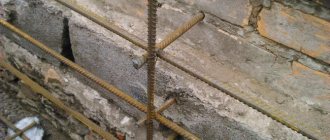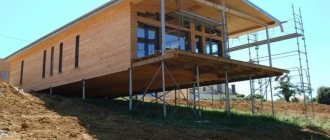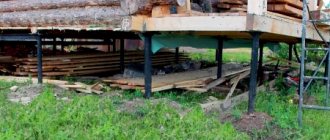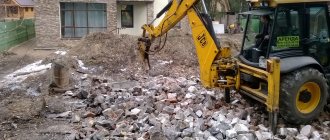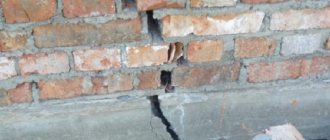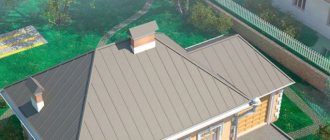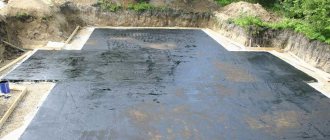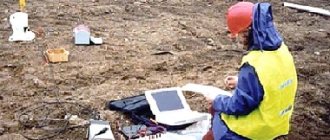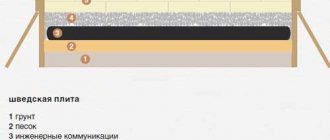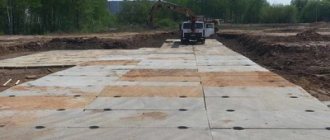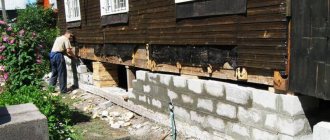There are times when a wooden structure urgently needs to have its foundation repaired, and this does not always happen during warm periods. However, there is a way to reconstruct the foundation even in winter with severe frost. This unique technology is carried out using screw supports. Repairing the foundation with screw piles is a quick, reliable and inexpensive way to save a wooden structure from complete destruction. You can reconstruct an old one or build a new screw foundation in just a few days, while the owner of the building can be sure that it will maintain the integrity of the structure for at least several years. You can order the service of repairing the foundation of a wooden house with screw piles by contacting, where true professionals work. Specialists will quickly assess the extent of damage to the foundation of the structure and offer the most beneficial ways to solve the problem.
Call us or Request a call
Causes of destruction
Foundation failure occurs for a number of reasons.:
- Design errors.
- Errors during construction, use of low-quality materials.
- Changes in the hydrogeology of a site caused by external causes.
- The appearance of additional load, extensions, new floors, etc.
- Construction work near the house caused changes in the structure of the soil.
- Poor quality waterproofing, which allowed concrete structures to become saturated with water.
The causes of destruction can appear either individually or several at a time, which sometimes complicates their localization and the choice of elimination method. Typically, the criteria for assessing the causes of destruction are the shape and volume of deformations, the type of cracks and other visible signs .
IMPORTANT!
Correct determination of the causes of destruction allows you to choose the optimal solution to the problem, so it is necessary to find the main influencing factors as accurately as possible.
Signs of a “weak” foundation
How to determine that something is wrong with the supporting structure:
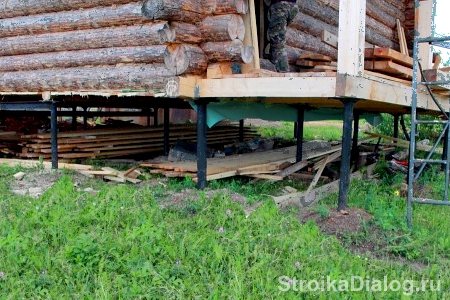
- there was an obvious asymmetry of the facade;
- cracks and crevices appeared in window and door fillings;
- the natural slope of the roof has changed;
- During maintenance and shrinkage monitoring, uneven settlement of the structures was revealed.
Defects can occur for various reasons:
- incorrect analysis of soil characteristics or complete lack of research;
- incorrect choice of diameter and length of piles (not according to the design);
- incorrect installation of poles;
- the groundwater level was not taken into account; accordingly, the structure was undermined or the piles were corroded.
If at least one of the listed signs or causes is identified, it is necessary to immediately take measures to strengthen the unstable screw foundation in order to avoid irreversible consequences in the form of cracking of the walls.
What foundations can be restored with screw piles?
Installation of screw piles requires a certain soil condition. If the foundation is located under the house and does not have underground elements such as a basement, cellar or other elements extending beyond its boundaries, then restoration is possible and quite feasible.
Too heavy and massive types cannot be restored - slab, recessed strip (if the house is large, heavy and has several floors).
The reconstruction of a pile-driven foundation is difficult, since this type of supporting structures has higher load-bearing capacities than screw piles.
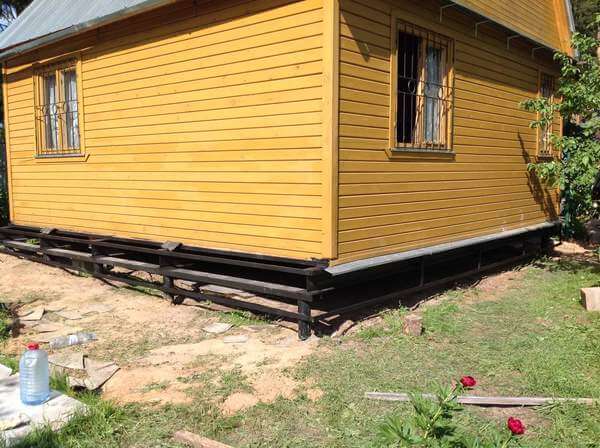
Why strengthen the old foundation?
Reasons when such work is needed:
- the base may partially collapse or become cracked. The reason for this is the following: the structure has been in operation for a long time, the design load exceeds the permissible parameters or soil movements occur;
- if the owner decides to change the structure of the house, for example, to add a second floor, then the foundation will also need to be strengthened. An alternative option is to replace the roof, where the material weighs more than calculated in the project. The reasons can be very diverse and therefore methods are used that strengthen the foundation of the structure. Each has both positive and negative sides, which we will look at below.
Is there a difference in replacing the base under brick, frame, etc. buildings?
The possibilities of replacing the foundation directly depend on the weight and configuration of the house.
Heavy brick houses need a strong foundation and, when replaced with screw piles, may turn out to be too heavy.
If you plan to move the house, then it is necessary to examine the walls and decide whether the masonry will withstand such impacts .
At the same time, frame houses are much easier and can easily be replaced with screw piles, moved to another location, and all similar procedures. In addition, it is necessary to make a preliminary calculation of the pile field and determine to what extent such an intervention is possible at all, and whether it will not be detrimental to all the structures of the house.
NOTE!
The calculation of a pile field should be trusted only to experienced specialists with special training.

Repair of the foundation of a brick house
Our company provides foundation repair services for both wooden and brick houses
Was
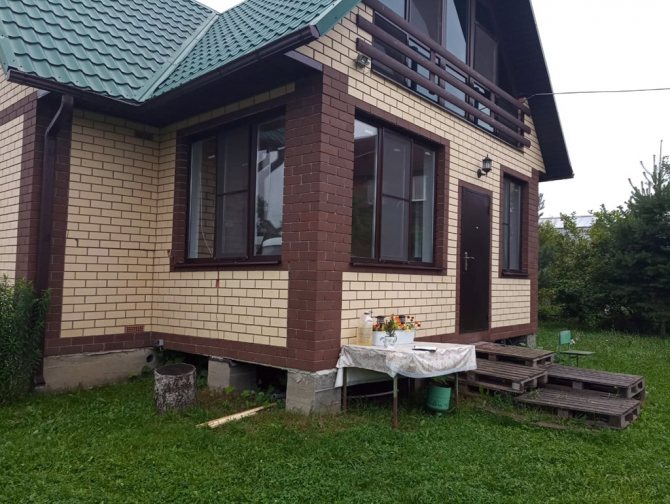
It became
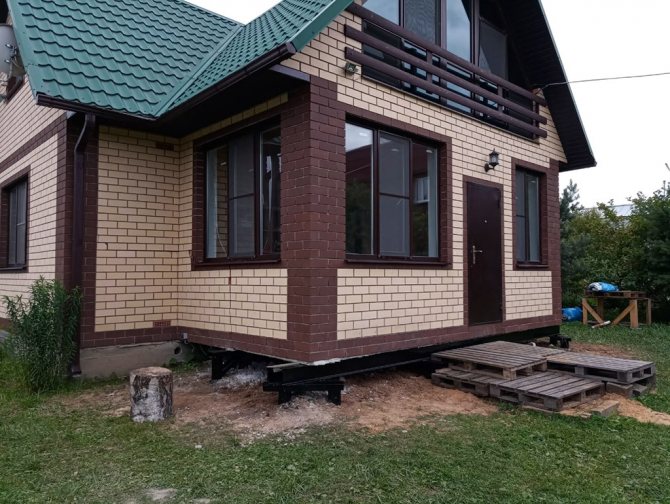
Pros and cons of recovery
Using screw piles for foundation repairs has the following advantages::
- The ability to perform all actions using the most gentle methods possible.
- Simplicity and high speed of operation.
- In some cases, all actions can be performed manually, without the use of special equipment.
There are some disadvantages:
- The bearing capacity of screw piles is limited and requires high-quality calculations.
- The installation of piles is carried out in rather difficult conditions, which reduces its quality.
- Creating a full-fledged foundation under an existing building is a complex engineering task that cannot be entrusted to just anyone.
In addition to these features, it should be taken into account that screw piles are immersed before contacting dense layers.
If this does not happen, no professional will vouch for the performance of the support, which creates a significant problem and requires preliminary clarification .
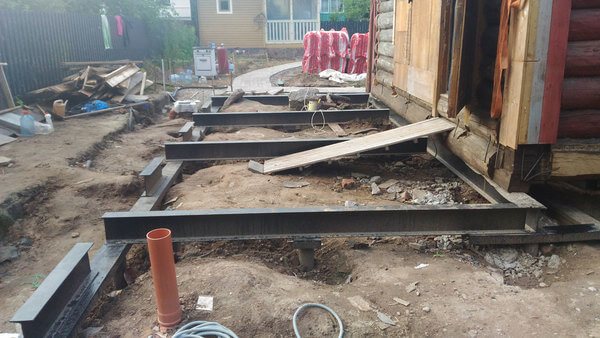
Advantages of a pile foundation
Let's summarize the advantages of pile technology:
- the cost of repairs is minimized;
- The time required to complete the work is reduced to 2-3 days;
- there are no large-scale earthworks;
- there is no need to use heavy equipment;
- replacement or strengthening of the foundation with screw piles can be carried out all-season;
- a durable, strong foundation on piles is provided, independent of the quality of the upper layers of soil.
Strengthening foundations with screw piles is a complex process. An important condition for obtaining a high-quality result is the involvement of a practitioner, the availability of the necessary equipment, as well as the quality of the piles themselves.
How are repairs carried out?
Repair of the foundation with screw piles consists of the following operations:
Calculation, survey of geological conditions of the site
A thorough examination of the soil is carried out to determine whether its qualities and load-bearing capacity correspond to the proposed actions.
The pile field is calculated, the type of piles, their size and number of blades are selected. Based on the results of test drilling, the length of the trunks is determined .
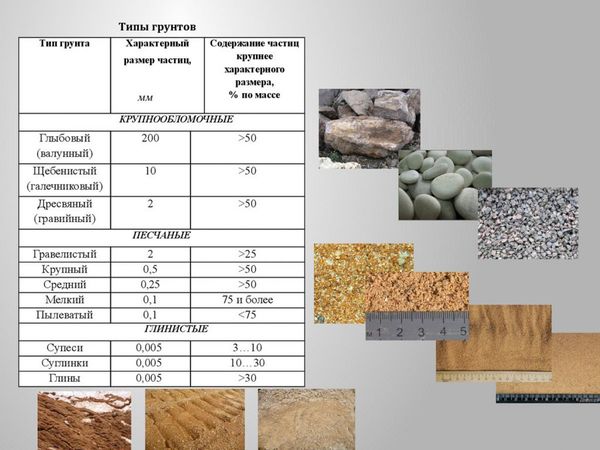
Strengthening corner areas
The corner sections of the foundation are freed from backfilling with soil. Part of the supporting structure located at each corner is removed.
The reinforcement is not removed; it will be needed for refilling. At the intersection points of the longitudinal axes, screw piles are immersed and trimmed so that their heads are flush with the base of the tape .
The formwork is created, an additional reinforcement cage is installed, rigidly connected to the old tape reinforcement.
Concrete pouring, curing, waterproofing and other procedures are carried out. Often this procedure is enough to completely stop the tape destruction process.
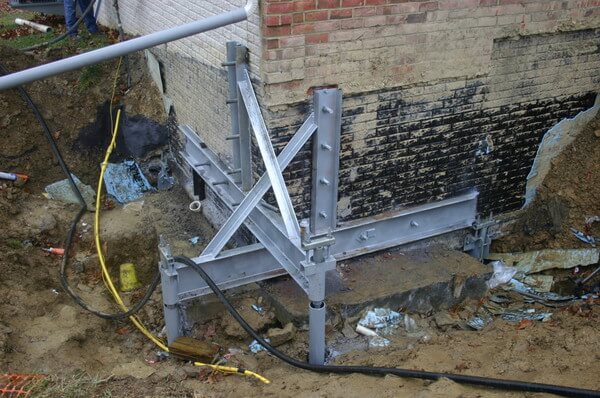
Foundation repair for light buildings
For frame, wooden or aerated concrete houses that do not have much weight, repairs can be completed faster and easier.
Screw piles are installed in the required areas . Then, opposite them, on the first rows of crowns lying directly on the tape, holes are cut through which powerful metal beams are laid - rails, I-beams, etc.
Then jacks are placed underneath them from the outside and the house is raised, unloading the foundation.
The beams are supported on piles and rigidly secured by welding or bolted connections.
Then the missing height of the tape is poured, ensuring contact with the walls.
The result is a version of a pile-strip foundation with uniform load distribution.

How does the replacement take place?
Procedure:
Preparation
The condition of the house is inspected, soil analysis, test drilling or driving of a reference pile is carried out.
Calculations are performed, all necessary decisions are made about the type of piles and their parameters. The house is prepared for work - emptied of property, all possible structures are dismantled, floors are dismantled, etc.
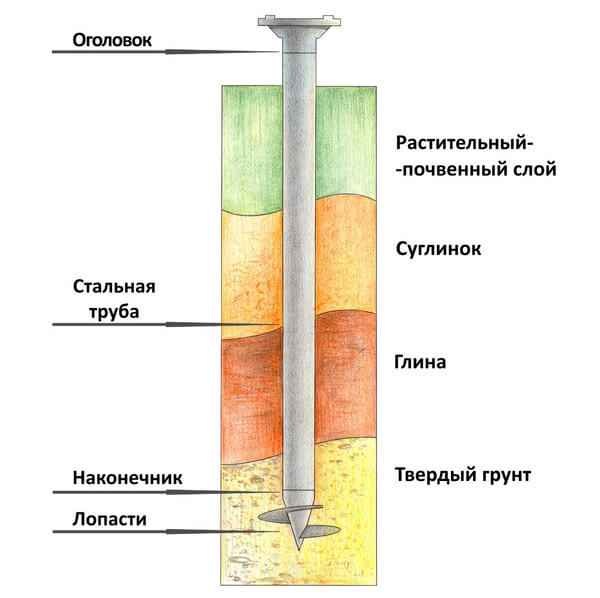
Lifting the house
At the corners from the outside, slats are driven into the ground, which will show the amount of change in the level of the house.
Then powerful (10 t) jacks are installed in the required quantity depending on the weight of the building.
They must be placed on flat, durable and non-slip support platforms. The lifting begins from the most obstructed point (corner), in small parts of several centimeters each. You need to act carefully, without rushing.
Supports are immediately placed in the resulting cracks. Work is carried out alternately from two opposite sides of the house .
After reaching the desired level, supports are placed under the walls.
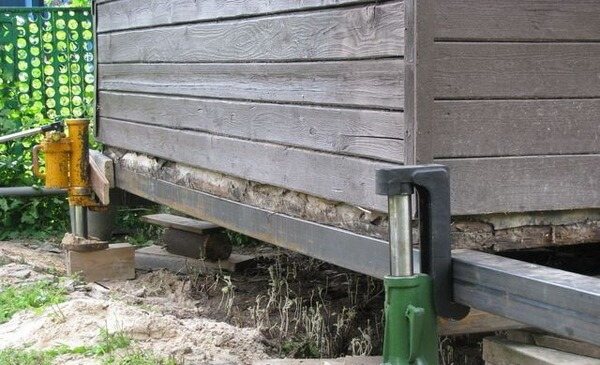
Disassembly and removal
After the foundation is freed, it is dismantled and removed. It is necessary to break concrete, dismantle brick or block masonry, or perform other procedures depending on the type and material of the foundation.
After dismantling there should be a completely empty space.
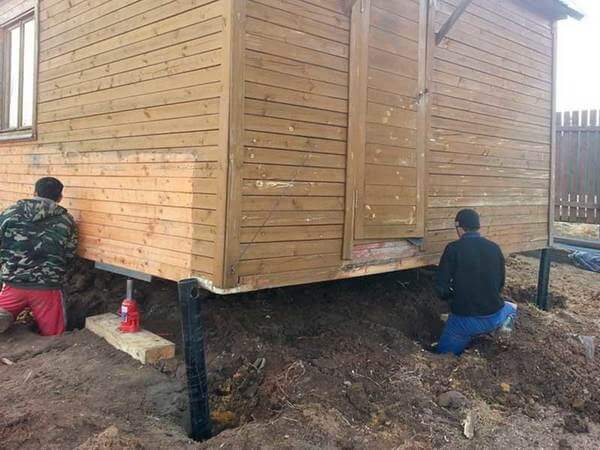
Installation
Screw piles are installed in the resulting empty areas. Installation is done according to the calculated (design) data, the internal trunks are immersed from inside the building .
After installing the piles, they are trimmed and tied, forming a common supporting system from individual supports with the required degree of rigidity.
After this, the house is carefully lowered onto the created pile-screw foundation and further work is carried out.
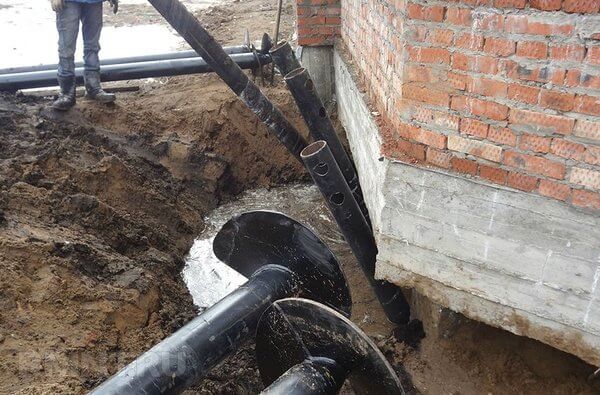
Pile-grillage
The pile-grillage foundation is widely applicable and is one of the most popular technologies in any climatic zone. The method is used for the construction of private, industrial and multi-storey buildings.
Such foundations are placed on all types of soil, as well as on sites with complex terrain. Its types are given below.
Driven piles
They are reinforced concrete or concrete. The reinforcement can be pre-tensioned. Since it is stretched like a string, the resistance to cracks of structures is significantly increased. If the work of the structure involves compression, then the reinforcement is pre-stretched and poured with concrete in this form.
Piles can be structurally with an open or plugged lower end. Its main advantage is low production costs, as well as the ability to quickly respond to changes in technical conditions. Installed like this:
- A hole of the required diameter and depth is drilled in the ground.
- A casing pipe (metal, concrete) is inserted into it, and reinforcement is lowered into it if the reinforced pile is laid structurally.
- The cavity is filled with concrete.
Drivers
Ready-made reinforced concrete piles are driven into the ground using special equipment, the choice of which entirely depends on the following factors:
- Pile indicators.
- Soil characteristics.
- Driving depths.
According to their profile shape, such piles are round, trapezoidal, square, and also with support rings, which improve load-bearing characteristics and reliability.
This method is used even in permafrost conditions.
Screw piles, their extension
Screw piles, as already mentioned, have good performance characteristics and are installed in any soil, including rocky soil - for this, especially strong tips are used.
The length of such piles can be increased by extension using extenders.
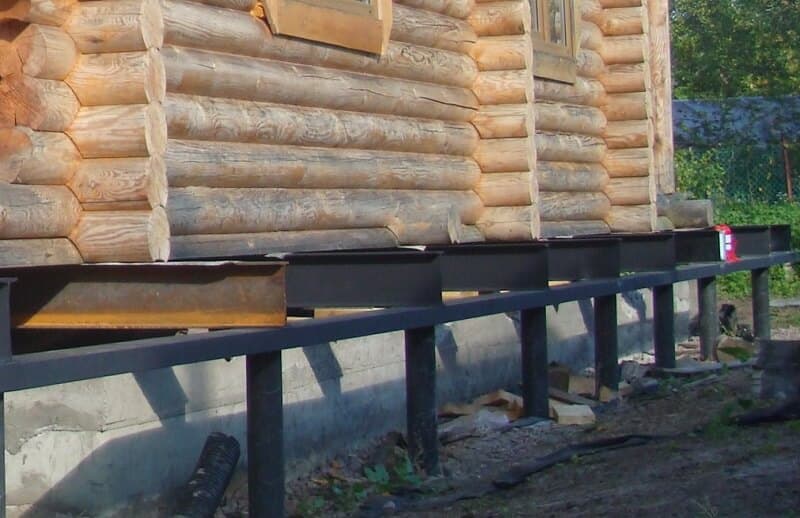
Advantages of pile-grillage foundations
Many developers mistakenly believe that such foundations have prohibitively expensive estimates. In fact:
- The construction of conventional foundations involves a large amount of excavation work - site planning, digging trenches, and soil removal. Often this work is done manually, which is very time-consuming and quite labor-intensive. Hiring special equipment is expensive, and it can seriously damage the grass surface, if there is one - then its restoration is expensive. Pile-grillage foundations do not have such disadvantages.
- An ordinary foundation takes more than a month to complete - it takes a lot of time for the concrete to set, and it cannot be poured at any time of the year, and such structures often spend the winter unfinished. And long-term storage of materials cannot but affect their quality. In addition, some parts of the structure have to be repaired or even replaced after wintering. The result is a loss of time and money.
- Very often, strip foundations are incredibly expensive due to specific soils and landscapes, and their reliability cannot be guaranteed one hundred percent. Pile foundations do not have such restrictions.
- The human factor has a great influence on the quality of the strip foundation - there may be deviations from the technology, or the use of low-quality materials may occur. Because of this, increased material consumption rates are included in the project, and their depth and width increase. Pile foundations are independent of people for the simple reason that they are carried out using special mechanisms.
Strengthening the foundation with screw piles
The foundation is strengthened when the tape is generally unable to withstand loads. Usually work begins with strengthening the corners, which is discussed above .
But, if the house is heavy and has long walls, it is necessary to install piles along the entire perimeter of the external walls.
To do this, actions similar to strengthening the corners are performed - sections of the tape are removed, piles are installed and rigidly connected to the support system.
The technology for performing this procedure can be implemented in different ways, it depends on the weight and material of the house.
Sometimes it is enough to install additional supports along the walls , raise the house a little and connect the piles to the base.
This unloads the foundation and distributes the load evenly between the tape and the point supports.
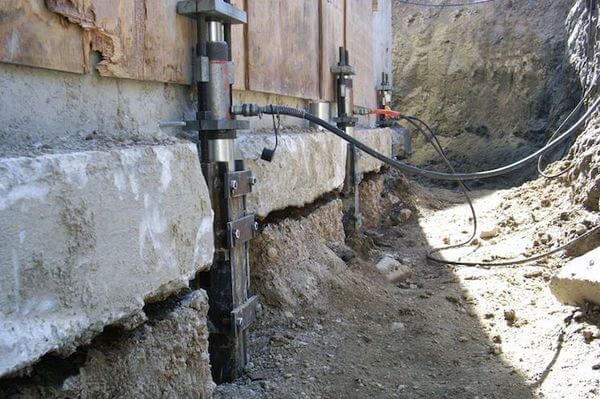
What other types of supports can be used?
When the total loads exceed those permissible for screw piles, another type of support is chosen:
- Bored pillars - mounted around the perimeter of the house and under load-bearing walls. Taking into account a certain step, holes are drilled to the depth of a solid layer of soil. Stuffed supports are installed inside the wells. New and old power elements are rigidly fastened together with anchors.
- Drilling injection supports - wells are drilled through the old foundation at an angle. The pits are reinforced and filled with concrete mortar.
- The press-in supports are mounted using a jack under the base of the old load-bearing structure. Such supports have a sectional structure: when pressed in, the elements are joined one by one.
Driven-in supports are not used for repairs, since when they are immersed in the soil, additional loads are created on the weakened foundation.
Dismantling technology
The dismantling technology depends on the type of piles and the material from which they are made. Driven concrete piles are cut with a diamond tool and destroyed with jackhammers .
In difficult cases, they are pulled out using lifting equipment, firmly secured to cables.
All these actions constitute a time-consuming and demanding engineering task that requires the participation of experienced specialists and heavy equipment.
Dismantling screw piles is much easier. The strapping is dismantled and the piles are separated from each other.
Then they are unscrewed from the ground manually or using special mechanisms.
It is noteworthy that the piles can then be used again in another place.
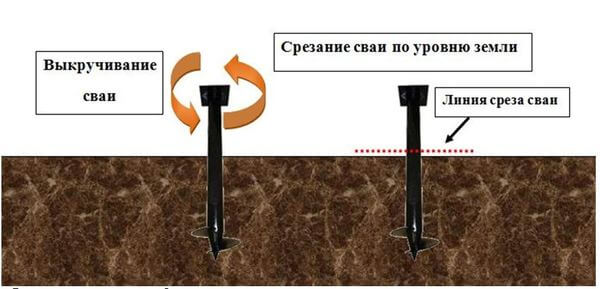
Soil strengthening
There are several methods to increase the bearing capacity of the soil under the foundation on piles:
- cementation;
- silicization;
- smolization;
- burning.
The first three technologies involve injecting appropriate solutions into the soil under the pile foundation. Silicate compounds are used when working with sandy and loess-like soils.
Resinization is applicable for strengthening foundations on fine sands. Cementation is carried out on clay and gravelly soils.
Solutions are supplied to the soil using special units - injectors. The units are equipped with metal pipes 6-8 m long; at their lower ends there are technological openings for supplying cement, silicate and other mixtures.
During firing, wells are created around the pile foundation into which a combustible mixture is supplied. The fuel burns under high pressure (up to 5 MPa), due to which hot gases penetrate deep into the soil around the wells. with increased hardness are formed
Cost of work performed
It is impossible to indicate any specific figures in this case, since the event is very complex, consists of several stages and requires an individual cost calculation in each case.
The main expenses go towards paying for equipment. So, one shift of an excavator costs about 18,000 rubles, and about the same cost for a shift of a dump truck (IVECO, MAN). Cars of domestic brands will cost about half as much.
Typically, communication with representatives of companies specializing in such work consists of two stages:
- A specialist will visit you to inspect the house and calculate the cost of the work.
- Upon reaching agreement, repairs will be carried out.
When using screw piles, work is carried out quite quickly; the main time is spent on clearing the premises of property and on dismantling floors and other structures, making lifting and repairs easier.
IMPORTANT!
Foundation repair is an expensive and responsible procedure ; it is strongly recommended that it be formalized in an official agreement with representatives of duly registered companies.
